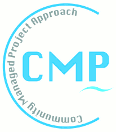First COWASH M&E / GIS training held in Hawassa
COWASH-woredas were trained for M&E and GIS to support the data collection, database management and to provide basic GIS-skills for water sector officials in regional, zonal and woreda levels. SNNP was the first region to be trained on 25-28.3.2014. Training was held in SNNPR water bureau's premises in Hawassa. There were 14-18 attendees (one female) participating from four woredas, two zonal offices and from regional bureau. Some of them attended only partially since regional bureau staff were having other assignments during the training period.
M&E training consisted of defining of the process for COWASH-monitoring and of walkthrough of the COWASH-monitoring tools. It has been observed that the data collection process needs strengthening so participants were sharing the experiences and attending in developing the process together with COWASH-monitoring specialist.
COWASH M&E training in the SNNPR water bureau's meeting hall (Photo by COWASH)
Second part of the training included basic computer usage-exercises to assure that all the trainees will have the basic skills before going to relatively complicated GIS-software. Third part of the training was about general spreadsheet database management. Training was conducted using OpenOffice CALC -open source software. Comparisons to Excel were made and training material was also provided for Excel.
Fourth part of the training was about the usage of the GIS-software. Aim is to provide basic skills needed for simple map making to allow trainees to create water point maps of their respective areas. Quantum GIS open source software was used for training and exercises were carried using training data from Amhara-region.
Woreda water point map being constructed using Quantum GIS (Photo by COWASH)
Last part of the training was about creating woreda-specific maps using the newly collected data from participants' own woredas. Results were promising since only five points out of 141 were outside the woreda-borders. Training was highly appreciated by the attendees and similar training was asked also in future. Too short time for the training was mentioned in several collected feedback-reports. Longer and more detailed refreshment training could be planned in future, but it should be kept outside of the busy constructing season.

